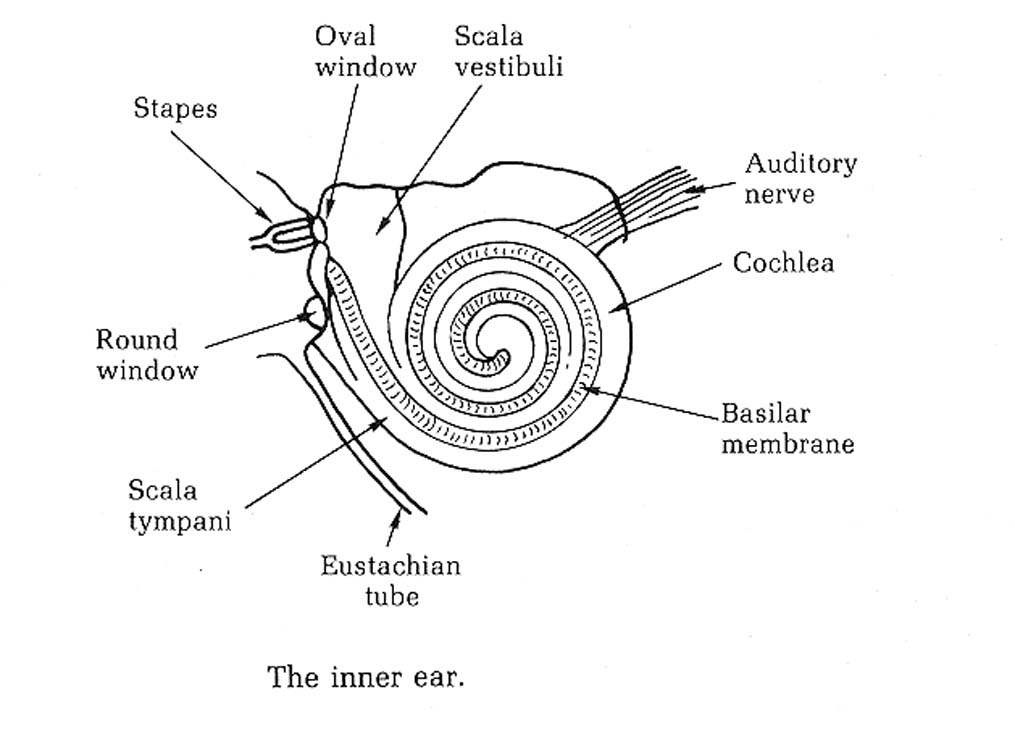Page 4: The Ear

image taken from source #2, page 37
The ear consists of three regions: the outer, middle, and inner ear.

image taken from source #1, page 40
The outer ear includes the external ear (pinna), which helps to determine the direction of high frequency sounds. Sounds enter the ear through the pinna, travel through the auditory canal (an air-filled tube), and vibrate the eardrum. The ear drum is the end of the outer ear and the beginning of the middle ear.

image taken from source #1, page 41
The middle ear transmits the eardrum's motion to the inner ear. The eustachian tube connects the throat to the middle ear, and helps to keep the pressure stabilized between the inner ear and the atmosphere. A bone, the hammer (malleus), is connected to the eardrum. The anvil (incus) is a bone connected to the hammer. Another bone, the stirrup (stapes), connects the anvil to the oval window. The middle ear functions to increase pressure on the oval window. These bones with some muscular control, protect the inner ear by limiting the effects of loud sounds. The oval window is at the end of the middle ear and at the beginning of the inner ear.

image taken from source #1, page 43
The inner ear is made up of the oval window, the cochlea (a coiled cavity and the inner ear's central organ), and the auditory nerve. The inner ear transmits the oval window's vibrations to the cochlea, though the auditory nerve, and to the brain. The cochlea is full of about 30,000 nerves that connect to the auditory nerve which takes the auditory information to the brain.
Other Pages:
Page 7:The Way We Perceive Sounds